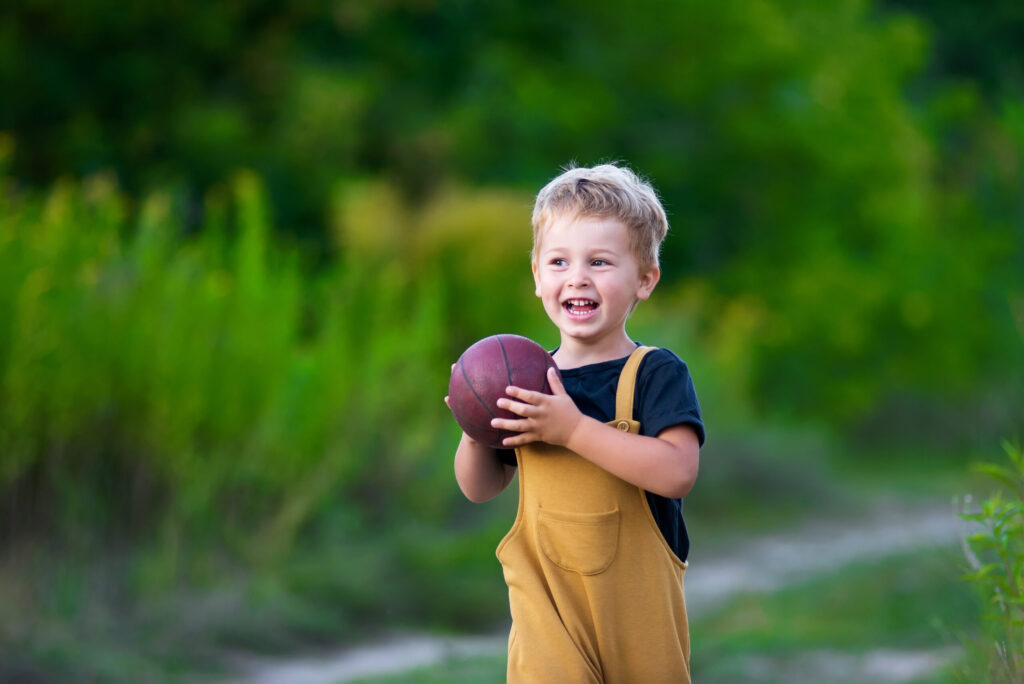Balls are a great toy that are not only readily available and easy to find, but they are also inexpensive and very versatile.
(DIY: you can even make a ball out of a rolled up pair of socks!)
They come in a variety of sizes, textures, weights, and firmnesses; which is part of why balls are so versatile. Playing with balls is something that all children can benefit from and helps to improve motor skills, hand-eye coordination, and timing. Ball play also helps improve social skills, turn-taking, as well as general play skills such as independent play, parallel play, and collaborative play.
Ball play is beneficial for development starting in infancy. During this time, ball play helps develop grasping skills, hand-eye coordination, visual tracking, and the ability to transfer objects back and forth between hands. It also helps with cognitive development such as learning how balls work: they roll, bounce, and move easily.
When your child becomes preschool aged, balls continue to help with gross motor skills as they learn to catch, kick, throw, aim, roll, and bounce. This is also the age where social skills come into play when children are participating in simple reciprocal games such as kicking, rolling, throwing and catching.
While all types of balls have their own benefits, there are certain types of balls that are helpful for certain reasons.
For example, balloons and bean balls are good for children who struggle with hand eye coordination, because they move more slowly through the air, allowing the child more time to react. Textured balls are great to help improve sensory exploration. Using large balls requires the use of both hands at once when throwing and catching and using small balls improves grasping skills and hand strength.
So, how can you help your child master different ball skills? Here are some general tips and ideas for working on ball play.
Tip for Success! Make sure the activity isn’t too difficult; you can do this by:
-
- Starting with activities where the child or the ball are stationary (standing in one spot while playing catch, kicking a ball that is not moving)
- Starting with larger balls and work towards smaller balls
- When using targets, start with larger targets and work towards smaller balls
- Start by standing near the target or other person and slowly increase distance
- Start with the ball moving slowly and increase the speed that the ball travels at
- When playing catch, start with using 2 hands and work towards using one hand
Throwing to a Target
-
- Roll a ball into a goal or box
- Throwing a ball into a box or circle
- Bowling with household items such as boxes of food or bottles of water
- Throwing a ball at a target on the wall
- Shooting hoops
Catching
-
- Toss a ball or stuffed animal in the air and catch it
- Play catch in sitting then kneeling then standing
- Bounce a ball on the floor and then catch it
- Practice catching a ball with and without it bouncing first
- Clapping before catching the ball
Kicking
-
- Practice kicking with each leg
- Kick the ball into a goal
- Kick a moving ball
- Kick a ball while running
- Kick the ball back and forth between their feet
Dribbling
-
- Use both hands to dribble the ball
- Use one hand to dribble the ball
- Dribble the ball back and forth between hands
- Dribble the ball to a beat

